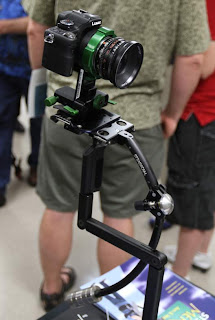iPhone 4 video frame difference

One surprising thing I've noticed about the iPhone's camera; the camera's framing for video is very different from the still camera's framing; and it's NOT just the top and bottom crop to fit the 16:9 aspect ratio. I first noticed it when switching between camera and video mode; the video image jumps in noticeably. Taking a video and a still, and overlaying the 1280 x 720 video frame on the 2592 x 1936 still frame (below) you can see that it's significantly cropped on the sides. I thought that maybe the crop size would be the equivalent of 2560 x 1440 (double the 1280 x 720 size.) I was wrong. Since I took the pictures while hand holding the camera, the alignment/scale is approximate. But doing a rough calculation, the area covered is about 2120 x 1190 which isn't close to being double 1280 x 720. Is this important? Well, no, but it is kind of curious. Overlay of iPhone video frame over iPhone still frame














